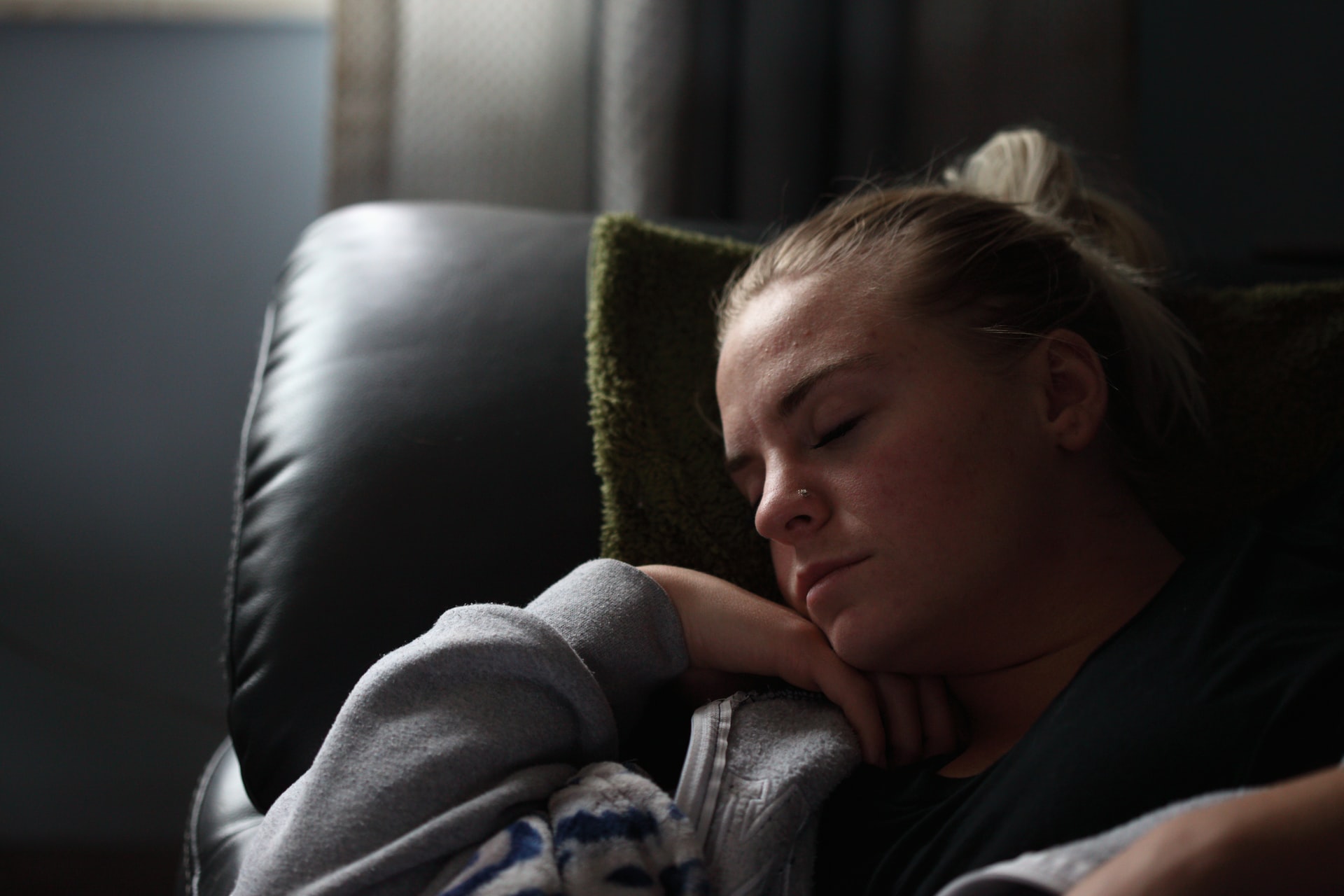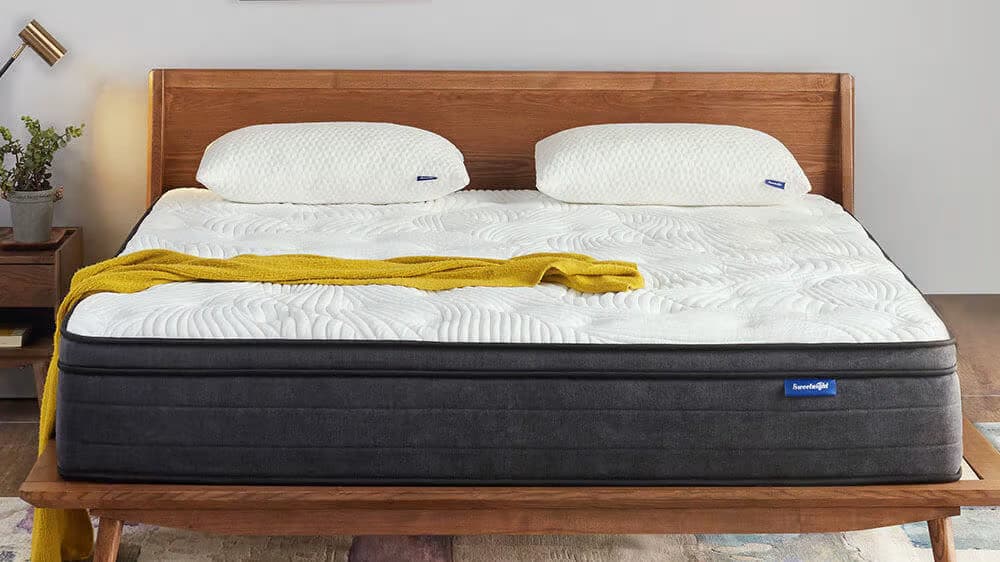Early Bed Bug Stains On Sheets: How To Know

If you have a bed bug infestation, it is best to discover it quickly, before the infestation takes root or spreads. Even though it can be inconvenient, treating a minor infestation is much cheaper and simpler than waiting until it has spread widely.
Low-level infestations, however, are also much harder to locate and correctly identify. Bed bugs can easily be mistaken for other insects like carpet beetles. It gives the bugs more time to spread to other parts of the house or hitch a ride to someone else’s house to start a new infestation if you misidentify a bed bug infestation. Discover how to spot bed bugs.
Table of Contents
Early Signs Of Bed Bugs
There are several signs you should be aware of if you think your home may have bed bugs. This is because it’s important to confirm whether you’re dealing with an infestation, and any of these symptoms could be evidence that you are.
Live Bed Bugs

- Small, reddish-brown insects around the size of flaxseeds
- Prefers to hide in tight cracks and crevices
- Often confused with spider beetles, carpet beetles, and other small insects
The most obvious indication is last. live bed bugs.
Unless they are hungry or pregnant females avoiding overly aggressive males, bed bugs typically don’t like to wander around. Finding a hiding place and sticking to it is typically how bed bugs behave.
Because of this, many individuals never see actual bed bugs until a serious infestation has developed. Live bed bugs will only be readily identifiable when their hiding places are disturbed, such as when you’re packing for a move.
It’s not always as easy to detect bed bugs as it might seem when you find a live one in your house.
Bed bugs and other insects are frequently misunderstood. We have found that spider beetles, carpet beetles, and cockroach nymphs are the most frequently misidentified insects as bed bugs.
Another widespread misconception is that bed bugs are the size of apple seeds. In reality, bed bugs are much smaller than apple seeds, so this isn’t quite true.
In comparison to adult bed bugs, which are typically only 4-5 mm long (although they can briefly grow as long as 7 mm when they are temporarily engorged with blood), an average apple seed is about 8 mm long. Even more diminutive, bed bug nymphs begin to grow at a length of just 1 mm.
Bed Bug Eggs

Eggs of bed bugs are present wherever adult bed bugs are. A female bed bug can lay an average of 200-250 eggs in its lifetime.
Relatively quickly, the eggs will hatch.
Bed bug eggs are very tiny, only 1 mm in length. They are pearly white in color, and they stick to hard surfaces.
Bed Bugs Shells

Two different types of shells are left behind by bed bugs. First, after the larvae hatch from their eggs, eggshells are left behind. It can be challenging to distinguish a bed bug eggshell from an unhatched egg due to its nearly transparent color.
Bed bugs shed their exoskeletons as they get older. These shed skins are translucent and yellowish-brown in color.
It can be challenging to distinguish between a shell and a live bed bug at first glance because they look so similar.
Bed Bugs Marks

If you don’t immediately notice bed bugs in your house, you’ll start to once you start to develop bed bug bites on your skin.
Being nocturnal feeders, bed bugs will emerge while you are sleeping to feed on human blood. Bed bug bites are small, red welts that may appear in patterns along the upper torso.
People frequently get bitten in the following places:
- Back
- Neck
- Arms
- Shoulders
- Face
Because they are typically more accessible areas of exposed skin, the aforementioned areas are the most frequently affected.
If you do notice bed bug bites on your body, do NOT scratch them. Although bug bites frequently cause itching, frequent scratching will keep the wound open and could result in infection.
Bites from bed bugs usually disappear after 1 to 2 weeks.
Bed Bug Fecal Stains

Bed bug feces resemble tiny, dark spots that are dispersed throughout bedding or clothing. These spots are actually traces of digested human blood, and they also have a faint rusted smell.
Particularly frequent feces stains can be found where bed bugs are nesting. They can, however, be found on anything a bed bug has touched, such as clothing, walls, and curtains.
Blood Stains

Being slow-moving insects, bed bugs are. A bed bug may occasionally be killed by someone tossing and turning in their sleep after they have finished feeding for the night.
That is where the blood stains on your bedding come from.
It’s not actually bedding bug blood that’s on the ground. Instead, it is human blood that the bed bug’s stomach was unable to properly digest.
Less frequently, bed bug bites could result in bloodstains. Anticoagulants are injected into the bloodstream by bed bugs as they feed: once these anticoagulants wear off, the area around the bite may bleed afterward.
Bed Bugs Odors

- An unusual, musty odor with no apparent cause
- Bed bug pheromones are often compared to the scent of raspberries, coriander, cilantro, or almonds
- A severe bed bug infestation may smell like rust, wet towels, and moldy laundry
Our sense of smell can occasionally be the first indication that something is wrong. A strange, musty smell that doesn’t seem to come from an obvious source, such as a mountain of dirty laundry, maybe an early indication of bed bugs if you notice it in your bedroom.
When disturbed or threatened, bed bugs release pheromones known as “alarm” odors. Some of the scents that these pheromones produce have a hint of sweetness or mustiness. The smell is compared to raspberries, coriander, cilantro, or almonds by those who have personally experienced it.
Pheromones typically have a very faint scent that is virtually undetectable to the human nose. Your chances of smelling the raspberry-like pheromone that bed bugs emit are extremely slim unless you’re a trained canine bed bug detector.
The smell of dead bed bugs, shed shell casings, and bed bug excrement are all mingled with the smell of bed bug pheromones when many bed bugs are cohabitating. The end result is a foul, rusty odor that worsens as the infestation gets worse.
Odor usually proves to be the least reliable of the early indications of bed bugs. That’s just because people can’t smell bed bugs when there are only a few of them around. In addition, the majority of people aren’t familiar with the smell of bed bugs or an infestation, so even if you smell something, you might mistake it for something else.
Bed Bugs Bites

- Small, red, itchy bumps that mysteriously appear at night
- The most common places for bites are the arms, hands, and legs
- Sometimes appears as clusters of 3 or 4 bites in a line (the so-called “breakfast, lunch, and dinner” pattern)
Many people believe that discovering unexplained insect bites when they wake up is the first indication of bed bugs.
Insects known as bed bugs are nocturnal and prefer to feed on our blood at night. As a result, during the night, exposed skin typically gets bitten. The arms, hands, and legs are the most typical areas where victims are bitten.
However, experts in pest control concur that bed bug bites alone are insufficient to identify a problem. There is no clear cut way to tell bed bug bites apart from other insect bites because different people can react to bed bug bites very differently. In fact, a startling 30% of people who get bed bug bites don’t even experience any skin reactions.
Although everyone responds differently, the most typical sign of bed bug bites is the appearance of small clusters of red, itchy bumps. The phrase “breakfast, lunch, and dinner” is often used to describe the appearance of bed bug bites, which typically occur in lines or small clusters of three bites. But in truth, bed bug bites can also come in the form of a single bite or infrequent patterns.
In addition, bed bug bites typically don’t cause harm and don’t spread any illnesses that are currently known to exist. Certain chemicals in bed bug saliva, however, may cause allergic reactions in some people. After being bitten, you should seek medical help if you develop severe itching, uncomfortable swelling, blisters, a fever, or flu-like symptoms.
Where Do Bed Bugs Hide?
Bed bugs can fit themselves into almost any crack or crevice that is bigger than 2 millimeters thanks to their small, flat bodies.
They frequently hide in baseboards, cracks and crevices in walls and baseboards, along the folds of curtains, in electrical outlets, along seams of mattresses, and in furniture joints. You should carefully inspect each of these locations for the aforementioned bed bug early warning signs.
From our experience as professional bed bug exterminators in NYC, here are some very common examples of bed bug harborage areas:
- Your Bed — pillows, bedsheets, mattress seams, headboards, bed frames, and box springs
- Next to the Bed — nightstands, dressers, rugs, and storage boxes
- Furniture — couches and cushions, bookshelves, tables, desks, chairs, rugs, and pet beds
- Walls — wallpaper, baseboards, window and door frames, curtains, pictures and posters, electrical outlets, and smoke alarms
What To Do If You Find These Bed Bugs Signs?
Knowing you have bed bugs is the unfortunate start of a difficult battle. Make sure to read our comprehensive guide on bed bug removal. Here is a list of actions to take in the interim as soon as you notice signs of the bugs.

Finding The Bed Bug Harborage
Finding bed bug evidence or observing one or two bugs is insufficient. The harborage area where the bugs are hiding must be located.
Usually, an infestation will be contained to the bed unless the problem is longer than 9 months to a year. Large infestations may extend from the bed to the furniture, to the space behind the walls, to the ceiling, and even to other rooms in the house.
These pests can hide in the crevices of headboards and bed frames as well as harborage inside of wood. It can be challenging to check the headboard; I advise using a good flashlight, and taking the headboard off the rest of the bed might be useful. Additionally, inspect the headboard’s reverse side.
Bed bugs are almost always within five feet of the bed. So make sure to search every crevice of the bedside furniture, including the electronics, as well as the baseboards and carpet edges.
Installing A Mattress Encasement
Make sure that the bugs can’t get to your bed in the first place. All of the bugs and eggs will be easily trapped inside the mattress and prevented from feeding on you by encasing the mattress and box spring in strong, efficient bed bug-specific encasements.
An encasement also eliminates all of the cracks and crevices that fresh bed bugs that are not already trapped inside would love to move into, and it makes spotting bed bugs on the encasement much easier since they are typically bright white.
Since these bugs can survive for up to 16 months without eating, keep the encasements in place for that long as well.
Since these insects will climb and crawl to reach their host, move the bed away from the wall by at least a foot. To prevent bed bugs from climbing up during the night, make sure that none of the bedding or bedskirt touches the floor at any time.
Although encasements are essential, you still need to guard against bugs that may be hiding in other parts of the room.
Installing Bed Bug Interceptors
Bed bug interceptors are useful gadgets that are placed under the legs of the bed or other furniture that is used for sitting. Only able to crawl and climb, bed bugs locate their hosts by looking for body heat and carbon dioxide.
Make sure bed bugs can’t climb up the bed legs to get to you if they are hiding in the walls or somewhere else other than the bed.
Bed bugs are trapped in the interceptor’s slick valley because the walls are too slick for them to climb and the outer ridges are made simple for them to scale.
The interceptors will finish securing your bed so you can rest comfortably while bed bugs are being treated after your mattress and box spring have been enclosed.
Laundering All Fabrics On High Heat
Laundering all bedroom fabrics and storing them in bags or containers while they dry out are important first steps when bed bugs are discovered. Bed bugs will hide within fabric and will cling to it.
Place the fabrics in sealed contractor bags or sealed clothing containers and wash and dry all the clothing in the bedroom and closet using the highest heat setting. Do this until the infestation is completely eliminated. One of the best ways to get rid of bed bugs is with heat.
Since this area may also be used as a harborage, don’t forget to bring curtains and drapes. Be sure to regularly check drapes for bed bug activity and to wash them on high heat.
Never enter the bedroom wearing clothing that has been left out.
Inspecting And Removing As Much Clutter As Possible
If you find bed bugs, it’s not good to have a cluttered bedroom. This makes it difficult to thoroughly inspect everything because the bugs could be concealed anywhere within the clutter.
Make sure to check everything, and after that, you might want to think about putting all other items in sealed containers for the duration of the treatment.
When you are bed bug treating, it is best to have your bedroom as empty and tidy as possible. A good practice is to think about sealing all of these items, like books, magazines, stuffed animals, etc., inside of a container with something like a Nuvan Pro Strip if you are unable to inspect every random item. After roughly 72 hours, this will eliminate any bugs that are hiding.
Can You Crush a Bed Bug?
Bed bug destruction is so simple that you could do it while you sleep.
I mean that quite literally.
It’s likely that bed bugs will be crushed if you toss and turn while you sleep.
Insects that carry bed bugs move very slowly. They can only move at the speed of a crawl, and their bodies aren’t designed for jumping or flying.
Due to the fact that they are unable to quickly flee if they are in danger, returning to their nest becomes a perilous journey.
Can You Bring Bed Bugs Home?

Bed bugs can come from many different places, and you may be wondering “can I invite insects into my house?”
Let’s talk about a few ways that bed bugs can get into your sleeping space.
Can You Bring Bed Bugs Home from a Hotel?
As tiny, unwanted hitchhikers, bed bugs are well known. Bed bugs enjoy hiding in cracks and folds of fabric, so there’s a chance you might bring them home if your hotel room had an infestation.
You’ll typically bring them home during periods of high travel demand, like the summer. They’ll probably hide in your luggage. Make sure to check both your luggage and your room carefully before leaving to prevent bringing them home.
How Long before I Know If I Brought Bed Bugs Home?
It can be challenging to pinpoint the exact day the infestation first appeared. You might have had them for a while, but not realize it for weeks or even months.
The lifespan of an adult bed bug is between six months and a year, and the eggs hatch in anywhere between six and twelve days. Knowing these early indications of an infestation is crucial for this reason.
How Can I Tell If My Sheets Have Bed Bugs?
Although bed bug traces can be seen in your sheets as well, bed bugs typically reside in your mattress or box spring. And just like your mattress, the signs are similar on your sheets
The telltale signs of a bed bug infestation in your sheets include dark stains that indicate human blood, feces, eggshells, shed skins, or spots of feces or feces.
Can Animals Bring Bed Bugs into Your Home?
Dogs and cats can undoubtedly bring bed bugs inside from the outside, just like fleas can. It’s crucial to remember that dogs and cats don’t have any more chances than people do of bringing them inside.
In actuality, this scenario has the lowest likelihood of occurring. Although they don’t live in fur like fleas do, bed bugs could still travel with your pet. It’s likely that bed bugs didn’t begin on or around your pet if you discover them there.
Bed Bug Behavior and Habit
The ability to spot an infestation before it takes hold and to keep an eye out for bed bugs after your home has been treated will depend on your ability to comprehend bed bug behavior (how they eat, live, and reproduce).
Feeding
- appears to prefer feeding on people, but will also eat other mammals and birds.
- Will easily move 5–20 feet from known hiding places (referred to as “harborage”) to feed on a host.
- Although they prefer the nighttime, they will search for hosts during the day if they are hungry.
- It can take 3–12 minutes to feed.
- 20% of the time, adults and large nymphs will void the remains of previous blood meals while still feeding, which results in the rusty or tarry spots found on bed sheets or in bug hiding places.
Life Stages/Mating
- Before moving on to the next of their six life stages, bed bugs must consume at least one blood meal.
- They are capable of multiple feedings.
- Additionally, molting of skin is necessary for each stage.
- Males and females must eat at least once every 14 days for them to continue mating and laying eggs.
- Each female may lay between one and three eggs daily and 200 and 500 eggs over the course of her lifetime, which is typically between six and twelve months but may be longer.
- If the conditions are right, the egg-to-egg life cycle could take four to five weeks.
Living Conditions
- Even at 7°C (46°F), bed bugs can survive and remain active. However, when their body temperature reaches 45°C (113°F), they will perish.
- The room needs to be even hotter in order to kill bed bugs with heat by ensuring that sustained heat reaches the bugs wherever they are hiding.
- The majority of places where a host can live have common bed bugs.
- Tropical bed bugs (Cimex hemipterus) require a higher average temperature than the common bed bug and are found in tropical and subtropical areas.
FAQs
Can You Have Bed Bugs & Not See Them?
Yes, bed bugs are notorious for hiding in cracks and inaccessible locations. If the infestation is small, it may not always be apparent right away.
It would be a good idea to check your clothing or luggage after returning from a trip to make sure you don’t have any unwanted hitchhikers.
How to Check Your Mattress for Bed Bugs?
The majority of the warning signs will be found in your mattress because bed bugs can live there. Look out for blood stains or signs of bed bug excrement, such as those dark spots, as was previously mentioned.
If the infestation is in your mattress, thoroughly search every inch of it for any holes because that is probably where the bugs are exiting.
What Evidence Do Bed Bugs Leave Behind?
Bites or blisters on your skin where the bugs bit you are typical bed bug evidence. Your sheets and mattress may have blood and feces stains from movement.
White eggs laid by female bed bugs will also be found in or near your mattress.
How Long Does It Take to Realize That You Have Bed Bugs?
There is no conclusive response to this. Although every infestation is unique to each home, it typically takes a few weeks to a month for symptoms to appear.
If the infestation is small at first, there won’t be any immediate symptoms. We did, however, mention some pest management advice if the infestation is severe. It’s best to get in touch with your local pest control company to take care of the infestation if you can.
How to Find Bed Bugs During the Day?
- Rusty, dark, or colored stains. Both from being crushed by sleeping bodies and from excrement that is primarily undigested blood, bed bugs leave behind telltale stains.
- Shelled eggs or eggs in protected areas.
- Drop the exoskeletons of bed bugs.
- Living Bugs.
Conclusion
Red bites on the skin upon awakening, blood stains or brown spots on bedding, a musty odor near the bed, and live bugs or their casings when changing bedding or cleaning close to the bed are all early warning signs of a bed bug infestation.





















